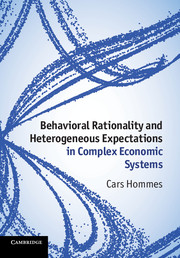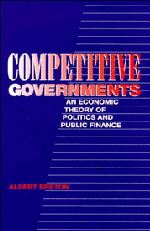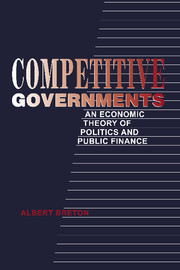Behavioral Rationality and Heterogeneous Expectations in Complex Economic Systems
Recognising that the economy is a complex system with boundedly rational interacting agents, the book presents a theory of behavioral rationality and heterogeneous expectations in complex economic systems and confronts the nonlinear dynamic models with empirical stylized facts and laboratory experiments. The complexity modeling paradigm has been strongly advocated since the late 1980s by some economists and by multidisciplinary scientists from various fields, such as physics, computer science and biology. More recently the complexity view has also drawn the attention of policy makers, who are faced with complex phenomena, irregular fluctuations and sudden, unpredictable market transitions. The complexity tools – bifurcations, chaos, multiple equilibria – discussed in this book will help students, researchers and policy makers to build more realistic behavioral models with heterogeneous expectations to describe financial market movements and macro-economic fluctuations, in order to better manage crises in a complex global economy.
- An introduction to nonlinear dynamics and complexity for economists and policy-makers
- Theories are illustrated by simple examples and economic applications
- More than 90 figures illustrate the complexity and richness of nonlinear dynamics
Reviews & endorsements
"Cars Hommes has written an exciting book that will help students, researchers and policy-makers to formulate their own realistic behavioral rationality models with heterogeneous expectations. I can highly recommend reading it. This book is undoubtedly also suitable for teaching nonlinear economic dynamics with a strong behavioral flavor at Master or PhD level. Even advanced Bachelor students should be able to learn some important lessons."
Journal of Economics and Statistics
Product details
March 2013Hardback
9781107019294
268 pages
254 × 177 × 16 mm
0.68kg
93 b/w illus.
Available
Table of Contents
- 1. Introduction
- 2. Bifurcations and chaos in 1-D systems
- 3. Bifurcations and strange attractors in 2-D systems
- 4. The nonlinear cobweb model
- 5. The cobweb model with heterogeneous expectations
- 6. An asset pricing model with heterogeneous beliefs
- 7. Empirical validation
- 8. Laboratory experiments.






